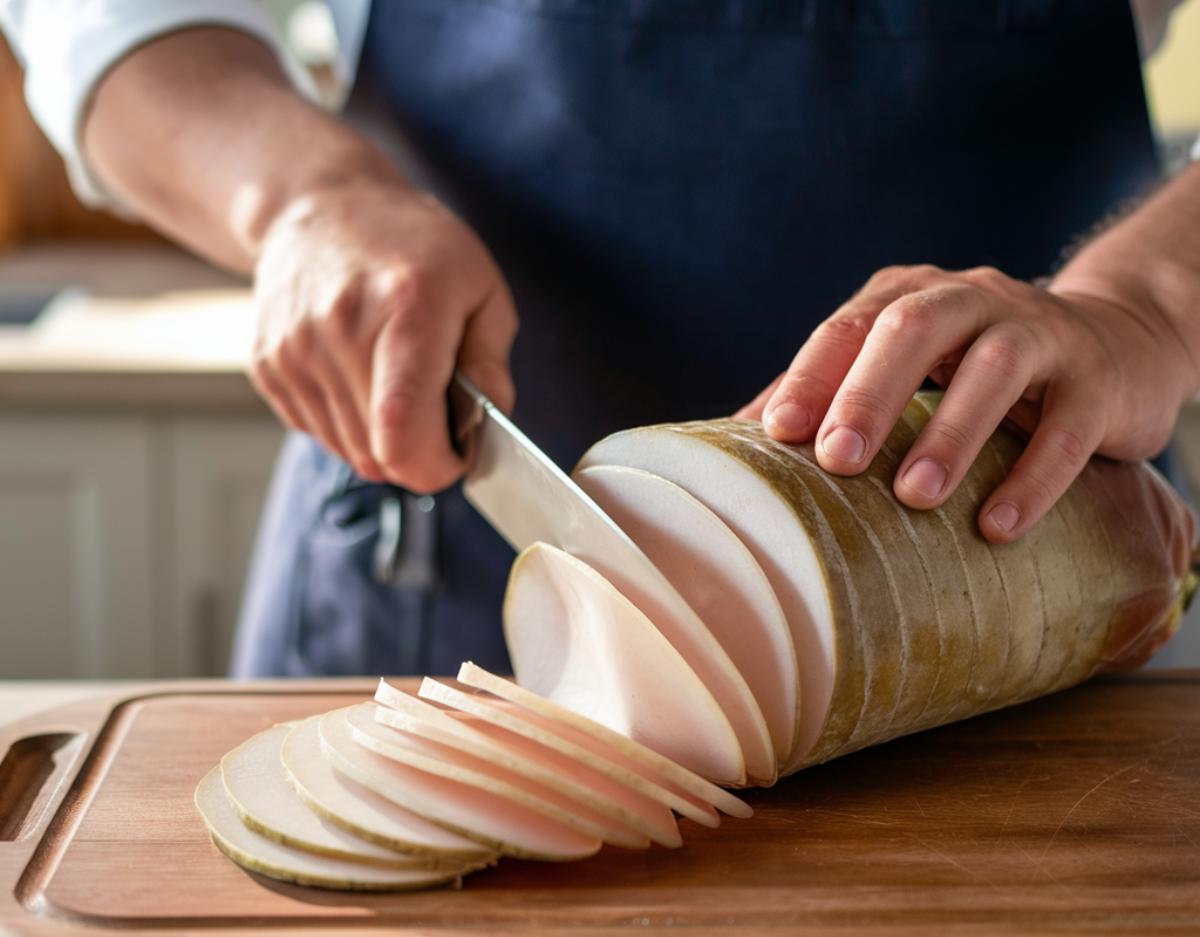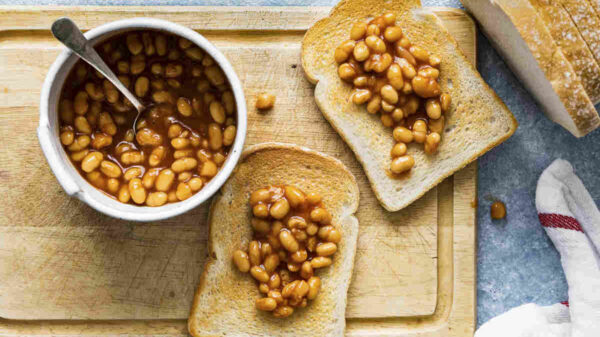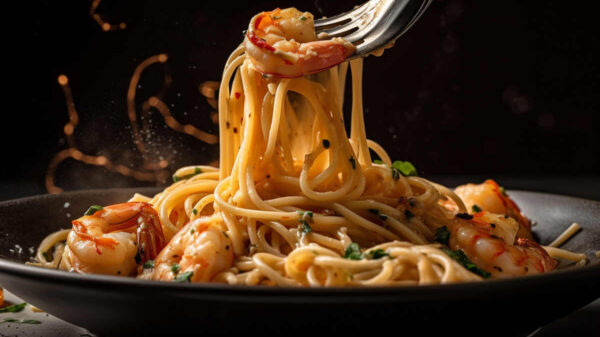Bologna, known for its rich history and vibrant culture, is equally famous for its great food. “Bologna food” is a catchall phrase that applies to many dishes and ingredients from the city’s deep culinary background. From filling pasta dishes to internationally known cured meats, Bologna food will tease the taste buds of every person who loves Italian cuisine.
Bologna Food History
The history of Bologna food is as rich and complex as the city itself. This strategic positioning as a medieval trading hub in Italy allowed Bologna to infuse tastes and techniques from other parts of the peninsula. This melting pot created the base for developing a culinary tradition—local ingredients and time-honored cooking techniques blended to create dishes that are at once comforting and sophisticated.
Bologna food origin
The origination of food in Bologna can be traced back to its Roman roots, where rich lands spawned early agriculture. Medieval trade brought varied spices and ingredients that enriched local gastronomy. This was further refined with the Renaissance’s sophisticated and delicate dishes and ingredients that improved the nutritional habits of the city and its surroundings, building the famous food culture of Bologna.
Tagliatelle al Ragù (Bolognese Sauce)
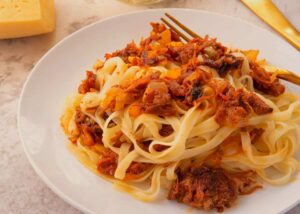
Tagliatelle al Ragù, commonly known as Bolognese sauce, maybe the most famous dish associated with Bologna food. This iconic Italian pasta dish calls for tagliatelle—a pasta characterized by ribbon-like ribbons, quite ideal for carrying rich, meaty sauces. The ragù combines the finest quality minced beef and pork, slow-cooked with onions, carrots, and celery, right down to a tangy tomato and red wine base.
The very long cooking time allows the melding of flavors into a profoundly savory and aromatic sauce. This means that the dish is traditionally finished with a generous sprinkle of Parmigiano-Reggiano cheese to add a sharp, nutty flavor that offsets the richness of the ragù. In a nutshell, Tagliatelle al Ragù identifies the heart of Bolognese cuisine, bringing out the city’s dedication to creating comforting, flavorful dishes.
Lasagna alla Bolognese
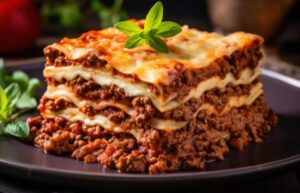
Lasagna alla Bolognese is another classic dish that puts forward the complexity and richness of Bologna food. This lasagna features layers of wide flat pasta sheets, ragù sauce, and creamy béchamel sauce, with grated Parmesan cheese on the top. The ragù sauce, rich with minced meat, onions, and tomatoes, is slow-cooked to develop a deep flavor that perfuses the lasagna. There is also béchamel—a smooth, velvety white sauce—that balances the richness of the ragù, lending it creaminess.
As the lasagna cooks, various layers bubble to the top, becoming a vibrant golden color, and it is a dish that would be most pleasing for special events or loved family gatherings. The judgment in representing the Bolognese culinary tradition is correct in that the simple ingredients combined in such a complex dish are characteristic of the tradition’s taste.
Tortellini in Brodo
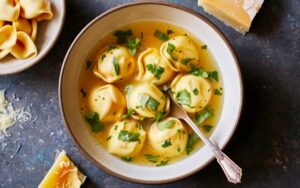
Another typical food heritage from Bolognese cuisine is Tortellini in Brodo; this dish reflects the subtlest but tastier eating. It is a traditional dish with small pasta forms in a little loop, filled with a mixture of different meats like pork and ham, and served in clear and specially flavored broth. The broth is prepared in a long process of simmering the beef or chicken bones flavored additionally by aromatic herbs and vegetables, from which the richness and saltness of the base stem.
These tortellini are well-designed to keep this savory filling inside, and the meal itself is often taken as a warming opening food during the colder seasons of the year or essential celebrations. This blending of tender pasta and the aromatic broth creates a balance so that the flavors come together harmoniously, reflecting the city’s tradition of using finer ingredients and taking time to prepare.
Tortelloni
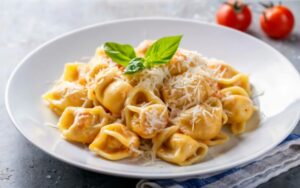
These are larger siblings of tortellini, usually filled with ricotta cheese mixed with spinach. Contrary to the tiny ones that are largely served in broth, the tortelloni are more liberally accompanied by a light sauce or even just sautéed with butter and sage. The addition of ricotta cheese made a slightly tangy creamy flavor, attaining notes of freshness and earthiness from the spinach.
Tortelloni can be dressed with many sauces- from the most classic to the most straightforward melted butter to a light tomato sauce. Tortelloni serves more than any other first course to highlight delicately flavorful fillings—lighter Bolognese fare in a vegetarian option that will satisfy and delight.
Mortadella di Bologna

Mortadella di Bologna is a renowned cured meat of Italy, separated from Bologna food. This large and cylindrical sausage is made of finely ground pork spiced and studded inside with small dice of pork fat. The result brings smoothness, a distinct texture, and a slightly sweet, savory taste.
It’s usually sliced thin and served in various ways—sandwiches and Charcuterie. Its rich, full, aromatic taste is suitable for everyday and formal dining. Mortadella di Bologna represents a sort of badge for Carracci’s gastronomical inheritance, resulting from an enormous classic from Italian cured meats.
Crescentine (Tigelle)

Crescentine, or Tigelle, are small, round bread rolls and one of the typical features of Bolognese cuisine. This bread is typically baked in a special cast-iron pan that promotes a crispy exterior and a soft, airy interior. These crescents are usually served warm, accompanied by various accompaniments, including cured meats, cheeses, and spreads.
This is all-purpose, and perfectly suitable bread for informal parties; it really makes a beautiful snack and even an appetizer. The simple but great flavor of Crescentine highlights a Bolognese tradition for fresh and suitable materials to make highly satisfactory and good food.
Piadina

A type of flatbread born in Emilia-Romagna, piadina is distinguished by the versatility and simplicity of its preparation. It is a rolled-out thin dough cooked on a dry griddle until crispy and slightly charred. Piadina is usually filled with various fillings, including ham, cheese, arugula, and tomatoes, then folded or rolled into a sandwich.
The piadina is portable and an utterly contextual bread; it is a favorite street food in Bologna because it is quick and delightful to indulge in while savoring the traditional flavors. Simple but flavored, it mirrors the city’s love of food that fits everybody’s taste and whelm.
Bollito Misto
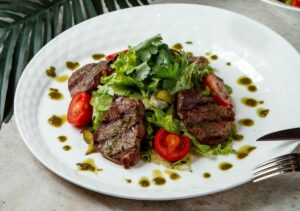
Bollito Misto is a classic Italian dish in which mixed meats—beef, pork, and sometimes chicken or veal—are simmered together to make flavorful beef broth. These meats are poached with vegetables and herbs to tender, tasty bits, often served with the most diverse sauces, like horseradish or green sauce. Mostly, the dish is cherished at special occasions and festive meetings.
The tender meats combined with the tasty sauces make Bollito Misto quite a meal and very satisfying, as well as part of the vibrant culinary heritage of Bologna.
Cotoletta alla Bolognese
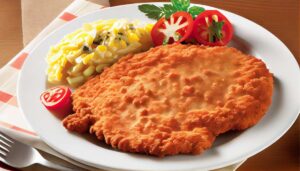
A breaded and fried cutlet of veal to which ham and melted cheese have been added and baked until golden brown. This dish could be matched by the crunch of breaded veal with good ham and cheese; it’s hard to resist for a pleaser. Cotoletta alla Bolognese is a dish versatile enough to be usually accompanied by either a vegetable serving or a fresh salad; therefore, it can well serve as a light meal by itself or be part of a heavy meal. This dish shows the heritage of this town by cooking something flavored and fair with humble ingredients.
Anolini
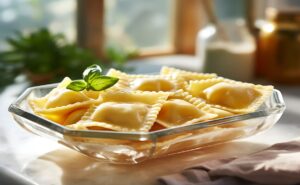
Anolini is the term for the small pasta stuffed in the same way as tortellini but with various fillings. Traditionally, they are filled and prepared with a combination of meats and cheeses and cooked in enriched broth or even in some sauce. The pasta is delicate, meant to balance the flavors most gently, and soon becomes a customary dish on festive occasions.
Anolini expresses the Bolognese commitment to preserving traditional recipes and methods, a win-glimpse into a city’s culinary heritage—the association of soft pasta with a tasty filling rendered this dish the most famous in Bolognese cuisine.
Cotechino con Lenticchie

Cotechino con Lenticchie is typically associated with New Year’s Eve. It comprises cotechino, the large pork sausage simmered with lentils. The lentils symbolize prosperity and good luck in the New Year, while the cotechino provides a rich, meaty taste.
This luscious mix is palatable and full of meaning, which is why it is included in the festive courses. This is the epitome of the Bolognese way, infusing rich and decadent ingredients in the making of a particular course that stirs feelings.
Salame di Felino

Salame di Felino is a famous preserved sausage made in Emilia-Romagna territory, and its name is taken from Felino town. This salame is made from a coarsely ground pork base, spiced with aromatic spices, and then dry-aged until it develops its deep, umami flavor.
In this way, the Salame di Felino is a prime example of highly praised Bolognese food, focusing on the much-celebrated ability of the city to deliver exquisite charcuterie items. It has texture and flavor are considered a precious part of Bolognese gastronomy. This salami is another of the boons from Bologna’s bounty of Charcuterie.
Gnocco Fritto

The gnocchi Fritto is small square pieces of deep-fried dough until golden brown outside and puffed soft inside. This is a popular snack, ordinarily warm, and served with other charcuterie bites of cold cuts of meats, cheese, and many spreads. The light and airy texture of the gnocco fritto allows it to be accompanied by an overwhelming majority of savory foods accompaniments, thus making it popular and suitable for all foods. Simplicity in preparation describes the Bolognese way of making nutrient-palatable and delicious foods, combining high-quality, readily available inputs and low efforts during meal preparation.
Friggione
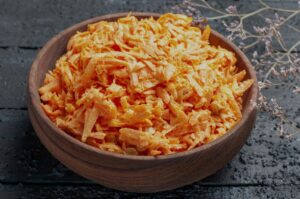
Friggione is a slow-cooked mixture of onions and tomatoes that characterizes a traditional recipe of Bolognese. It’s meant as a garnish or as an accompaniment to other dishes. Caramelizing the onions gives the onions a very intense, sweet taste and marries this with the tomatoes to proffer a luscious, savory sauce. The mixture is then allowed to simmer to a low heat.
Hence, the flavors have time to blend and not overpower each other, resulting in an aromatic, simple, and strong-flavored dish typical of Bolognese cooking. Friggione is an excellent example of the city’s slow, meticulous cooking style, which allows the natural tastes of the ingredients to shine.
Zampone
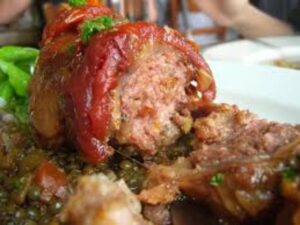
Zampone is a classic dish of Bologna and is made with cooked and stuffed lining of a pig’s leg. Inside the skin is ground pork, pork fat, and seasonings, and finally cooks gradually until it turns into a dark, rich taste. Zampone is more commonly consumed on festive occasions and served with lentils or other accompaniments.
Its delicious, tender meat and spiced filling form a unique and unforgettable dish typical in Bolognese cuisine. In this dish, one can see the city’s great care in preserving traditional recipes—a way to unveil how rich its culinary heritage is.
Pasticcio di Carne
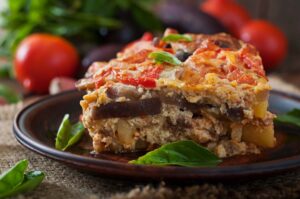
The pasticcio di carne, going for a very beefy pie, is a staple among all Bolognese recipes. This rich beef stew is baked in a light, flaky crust—tender pieces of savory meat cooked in a seasoned, spicy sauce. The pastry gives a crispy texture to the rich filling, making this a satiating, almost decadent dish. A few local people would mainly have Pasticcio di Carne as a primo piatto, typical of a city tradition of strongly flavored and rustic dishes showcasing the best local produce.
Bologna Food is a type of processed meat, often used in sandwiches and other dishes. Its nutritional content can vary depending on the brand and specific formulation, but here are general nutrition facts for a standard 2-ounce (56 grams) serving of Bologna:
| Nutrient | Amount per 2 oz (56 g) | % Daily Value (DV) |
|---|---|---|
| Calories | 150 | 8% |
| Total Fat | 12 g | 18% |
| – Saturated Fat | 4 g | 20% |
| – Trans Fat | 0 g | – |
| Cholesterol | 30 mg | 10% |
| Sodium | 480 mg | 21% |
| Total Carbohydrates | 1 g | 0% |
| – Dietary Fiber | 0 g | 0% |
| – Sugars | 1 g | – |
| Protein | 6 g | 12% |
| Vitamin D | 0 IU | 0% |
| Calcium | 8 mg | 1% |
| Iron | 0.8 mg | 4% |
Key Points
- Calories: A moderate amount of calories, contributing to daily energy intake.
- Total Fat: High in fat, especially saturated fat, which should be consumed in moderation.
- Cholesterol: Contains cholesterol, which can impact heart health if consumed excessively.
- Sodium: High in sodium, which can contribute to high blood pressure if eaten in large quantities.
- Protein: Provides a good source of protein, essential for muscle repair and growth.
- Carbohydrates: Very low in carbohydrates, including fiber and sugars.
Note: The values can vary by brand, so it’s always a good idea to check the specific nutrition label of the Bologna you purchase.
What type of food is Bologna?
Bologna is famous for its savory Italian food, which is characterized by fresh, high-quality ingredients and prepared using traditional techniques. Some typical foods of the Bologna region include:
- Meat-Based Dishes: Meat is the primary ingredient in Bolognese dishes, especially the most famous ones, such as tagliatelle al ragù. This dish is more famously known outside of Italy as Bolognese sauce, a long-cooked meat sauce containing ground beef and pork.
- Stuffed Pastas: Tortellini and tortelloni are the two traditional types of stuffed pasta. Usually, meat fills them, cheese, or vegetables and served in broth or light sauces.
- Cured Meats: Mortadella di Bologna is a symbol of cured sausage made from finely ground pork, spiced with spices and small cubes of fat.
- Rich Sauces and Bakes: Lasagna alla Bolognese and other pasta bakes are very popular. They feature layers of pasta, meat sauce, béchamel, and cheese.
Bologna’s history and geography are deeply rooted in its cuisine, which is similar to a flavorful and satisfying dining experience.
Which meat is Bologna?
Bologna is the name of a cooked luncheon meat made from pork. Specifically, it refers to sausages made of finely ground or even minced pork meat, optionally mixed with pork fat and a myriad of seasonings. The mixture is then stuffed in a casing and cooked or cured. Normally, it is a smooth, cylindrical sausage with typical cooked sausage flavor and texture. It is delicious when thinly sliced as part of sandwiches or charcuterie boards.
What is so special about Bologna?
Bologna, sometimes known as Mortadella di Bologna, is special for various reasons.
- Historical Significance: Bearing the name of the city from which this style of sausage first originated, Bologna, Italy, this product has a history of many centuries, with its undeclared origin dating back to at least Roman times.
- Special Ingredients: Traditional Bologna comprises finely crushed pork and pork fat, spiced uniquely by a seasoning blend. Based on some recipes, pistachios are added, which provide even a further unique taste to the meat.
- Safe Status: The European Union has awarded Mortadella di Bologna a PGI (Protected Geographical Indication); therefore, the branding of Bologna products is only allowed if the meat is traditionally made in Bologna.
- Handcraft: The making of Bologna is a very delicate process. The meat mixture is slowly and caringly salted, spiced, and then put into casings. Slow cooking or curing takes place to develop the typically smooth texture and rich taste.
- Culinary Versatility: Bologna is versatile and used in many recipes, from sandwiches to Charcuterie. It can also be used in salads and pasta recipes. Since the flavor can range from mild to savory, it has become a favorite among most people to use in all these culinary recipes.
These make Bologna one of the grandest and most distinctive products ever offered by Italian and global cuisine.
Key Components of Bologna Food
The very soul of Bologna food lies in the high basic quality of its components:
- Parmigiano-Reggiano: Equally important in the Bologna cuisine is this hard cheese with nutty and umami flavors, notably used in Tagliatelle al Ragù and Lasagna alla Bolognese.
- Pancetta: Cured pork belly gives a smoky saltiness to much of the food, from ragù to stew.
- Balsamic Vinegar: Original Balsamic Vinegar from Modena, in particular, has a sweet and tart taste that goes perfectly against many savory dishes and has a variety of uses in cooking.
Conclusion
Bologna food is a living tapestry of a city’s taste, product, and food traditions committed to quality and authenticity. From the famous Tagliatelle al Ragù to the little-known Friggione, each dish sampled here says much about Bologna’s food culture and tradition of guarding old recipes. Exploring the food of Bologna means getting to the meat, or should I say the vast chunk, of the city’s culinary history. Therefore, it is one place a true food lover in the Italian tradition really can’t miss.
Frequently Asked Questions (FAQ)
“Bologna” refers to the Italian city known for its cuisine, while “baloney” is a term for a type of processed meat or slang for nonsense.
The term “Bologna” refers to the city in Italy where the sausage originated. The name is derived from the Italian city Bologna, known for its rich culinary traditions.
Bologna food, or mortadella, is a type of Italian cured meat made from finely ground pork. It includes fat cubes and often seasoned with spices and herbs.
Bologna pairs well with fresh bread or rolls, often enjoyed as a sandwich. It also complements pasta dishes, salads, and charcuterie boards.
Bologna is renowned for its rich cuisine, especially tagliatelle al ragù (often called Bolognese sauce) and tortellini. The city is also famous for its cured meats, such as mortadella.
Yes, Bologna’s food is widely praised for its rich, authentic flavors and high quality. The city’s culinary traditions, such as tagliatelle al ragù and mortadella, are celebrated for their deliciousness and depth.

